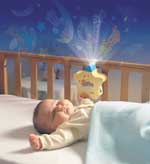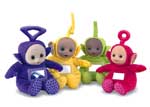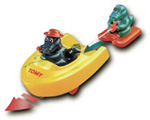|
|||
| Introduction | |||
| Childhood games and toys | |||
| PARENTS AND TOYS It is good to teach parents games and activities, but also how to use toys at home. In this sense, they can use the previous recommendations and also the following ones:
-
children should choose their
toys freely, so parents should not impose them their own likes.
It is only advisable to make recommendations when the child selects
an inappropriate toy for his/her age and stage of development.
We could give many other recommendations to parents for the best use of toys by their children. The ones provide here are an initial alert of what must be taken into account in the education of our children. This way, the toy expresses its own importance as a tool for the development of children, and we should highlight its enormous potential for the stimulation of all the types of intelligence. EPILOGUE Playing is the first and main activity of children, and even, an obligation for them. For that reason they should be specifically thought for them and they should follow a series of safety rules that are not chosen at random, but only after a long study carried out by experts. From the tin-toy until our days, the evolution of safety in toys has been constant and even, in some aspects, spectacular. The use of new materials or special designs, among other measures, tries to ensure that the children’s game is, above all, safe.
The Spanish Council of Ministers of June 30, 1990 approved the Real Decree that confirms the adoption in Spain of Guideline 88/378 of the Council of the European Communities, on toy safety. In its Annex II, this Real Ordinance details the main risks to be avoided in the production of the toys and in the materials they are made with, taking into account their use and the age of the children who are going to play with them. The Real Decree classifies risks in five main groups: physical and mechanical, chemical, electric, hygiene and radioactivity. A small review of the main analysed aspects will allow us to focus on the most important points of the toy safety. When it comes to physical and mechanical properties, the confirmation of the mechanical resistance of toys is required for each of their parts, to avoid wounds caused by their break or deformation. It also stresses the derived risks of borders and corners of the toys. In this section the rules are specially demanding when it refers to toys for children under 36 months. With regard to inflammability the conditions that toys and their composition materials should complete are listed. This way, in the event of contact with the fire the flame must fade when the toy is withdrawn from the flame, and, in the event of burning, it must happen slowly and with little speed of propagation of the flame. To avoid the risk of inflammability, the us of celluloids is not allowed, neither materials with a hairy surface that flame up when brought near to a flame. On the other hand, toys should not contain gases, inflammable substances or liquids or susceptible of becoming so when in contact with other elements. In the section of chemical properties, the ruling specifies: "toys will be designed and manufactured so that their ingestion, inhalation, contact with the skin, nose or eyes does not present risks for health or danger of wounds." A series of limitations in the use of the lead, antimony, arsenic, barium, cadmium, chromium, mercury and selenium are listed. As far as hygiene and radioactivity are concerned, toys should be conceived and manufactured so that they can be easily cleaned to avoid infection risks and illnesses. Besides, they should not contain elements or radioactive substances in a harmful proportion for health. But we always have to bear in mind that the safety of a toy does not depend exclusively on its conception, design and production. A fundamental factor in toy safety is the correct election, taking into account the age and the children's intellectual capacity. |
||||||||||||||


